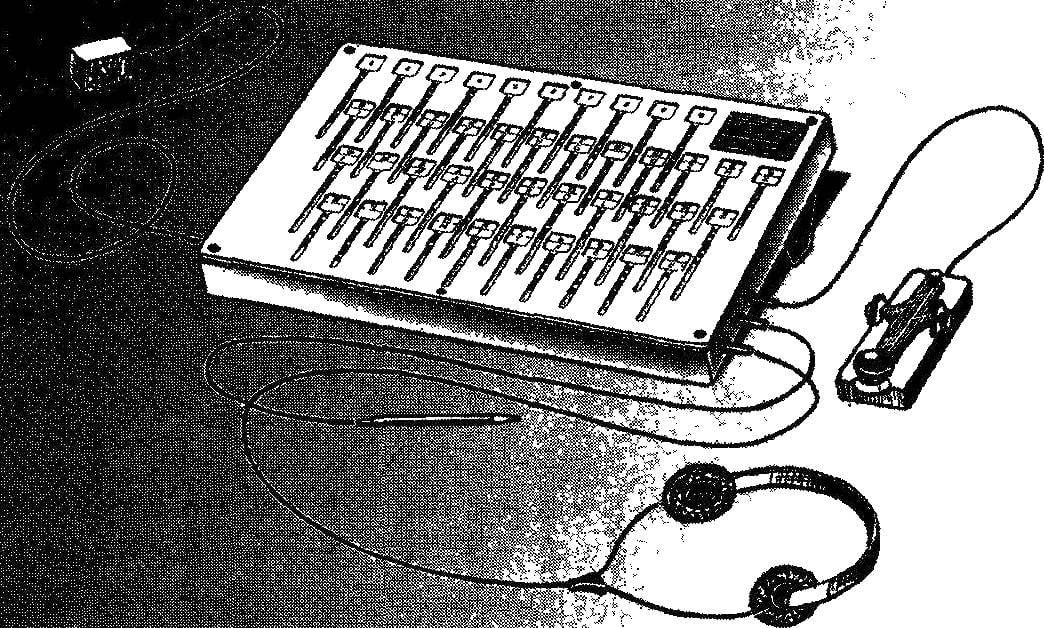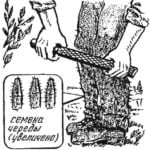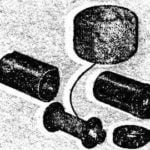 Did you know that at the time shortwave Amateur radio communication, uniting hundreds of thousands of people in almost all countries of the globe, was to some extent the prototype of the Internet and current provider? In particular, short wave periodically going kind of forums (then they were called “round tables”), which discussed mainly technical issues related to the design of short-wave equipment and the passage of radio waves. On short waves to new friends and keep in touch with old And just this would need a homemade radio transmitter power from 10 to 40 watts and the HF-receiver. A thin “thread” of human relationships extends directly from one user to another without any intermediaries or service providers, without fiber and satellite communication and mobile phone companies.
Did you know that at the time shortwave Amateur radio communication, uniting hundreds of thousands of people in almost all countries of the globe, was to some extent the prototype of the Internet and current provider? In particular, short wave periodically going kind of forums (then they were called “round tables”), which discussed mainly technical issues related to the design of short-wave equipment and the passage of radio waves. On short waves to new friends and keep in touch with old And just this would need a homemade radio transmitter power from 10 to 40 watts and the HF-receiver. A thin “thread” of human relationships extends directly from one user to another without any intermediaries or service providers, without fiber and satellite communication and mobile phone companies. Many assumed that with the advent of personal computers and the Internet and cell phones shortwave ham radio communication will disappear just as the gramophone in the age of MP3 players, but there it was — people still prefer to communicate directly, without intermediaries, In the end, QRV today filled the living voices of hams, and exciting beeping Morse code.
Speaking of Morse code. Interestingly, in our days, the Morse code has almost completely disappeared both from the military and commercial communications and moved into undivided use of radio Amateurs And it is their quite satisfied, because the transmission signals by using combinations of dots and dashes allows the most distant radio — sensitive ear operator, radio telegraphist able to catch the most faint signals in addition, in our time, radio Amateurs often use to communicate in Amateur radio broadcast computers with special programs, allowing to transmit Morse code signals is not a traditional Telegraph key, and using a computer keyboard There are also programmes capable in receiving to decode the coded signals in Morse.
However, it is rather an exception, most of the hams today — the same as a hundred years ago, sending in the air with the familiar Telegraph key all the same dots and dashes.
Unfortunately, the case with the development of the Telegraph alphabet has become in our time more difficult. Once the training of radiotelegraphic was engaged in the defence of society DOSAAF, but today novice hams learn the Morse code in a few collective radio stations. Practice shows that to study the transmitting and receiving by ear alone, without a coach instructor is almost impossible.
Want to offer a simple simulator, with which you can not only quickly learn the Morse code, but to fulfill the transmission quality and apparent signals.

Morse code and the relation between its signs, dots, dashes and spaces.
First of all, several principles underlying the telegraphic alphabet, for the transmission of letters used package, consisting of one or more characters — dots and dashes. The duration of the dash shall be three times more than points, the interval between marks for the duration equal to the point, and the space between individual letters-parcels according to the duration of three dots (or one dash) the Individual words are separated with a period lasting two or dashes When you use these principles of transmission of telegraphic signs, signal turns out the most legible and noise-free. Unfortunately, when learning Morse code on their own to catch the ear of the nuances of all these correlations is difficult.
The principle of operation of the simulator is easy and His main part payment from foil fiberglass cut (or etched) code paths composed of conductive and isolated sites, the Combination of these plots corresponds to the encoding of one of the letters or numbers in Morse code If you hold one of these walks a special pencil, the manipulator, moving on the conducting section of the closed circuit and an alarm sound generator, and at the intersection of the isolated segment of track, the signal is interrupted. Depending on the span of the code paths from the speaker will sound the melody of one of the letters in Morse code with a perfect ratio between the length of dots, dashes and spaces between them.

Training simulator for the reception and transmission of Telegraph signals:
1, 9 — screws for fixing the panels to the body, 2 — top bar with guide slots (plastic, sheet s3), 3 — code panel (foil glass fiber, sheet s2), 4 — sound generator, 5 — base of the body (duralumin, steel channel 16x20x2), 6 — a connector for headphones, 7 — bottom panel (plastic, sheet s3), 8 — a connector for the power source 10 to the supporting bracket (aluminium wire Ø 5), 11 — switch of “phone-speaker”, 12 Jack for connecting a Telegraph key, 13 — connector for pencil manipulator.

The code panel (foil PCB).
Look at the picture — panel of the simulator resembles a computer keyboard, as square hole-traps at the beginning of each code track, located on the panel in accordance with the arrangement of keys on the “Kabar de” the Resemblance is complete the badge with the letters glued in the recess of each of the holes.
The compliance panel of the simulator the computer keyboard was not chosen by chance — in our time with the computer is a significant part of youth, so when this version of remote trainer the companion, the instructor even does not know Morse code, do not have to be retrained — he can transfer to students of educational texts as quickly and easy as typing them on the computer.
The electronic “heart” of the simulator is a sound generator, which is a single-ended multivibrator, collected on transistors КТ3107 and КТ3102. Frequency sound generator is determined by the values of R1 — R4 and capacitor C1.

Schematic diagram of the sound generator.
In principle, a sound generator can be mounted on the PCB, however for a single instance of the simulator much easier to use a method used usually for layouts Pick up a plastic plate with dimensions of 50 × 80 mm, stick it on a sheet of paper of appropriate size with the picture wiring diagram alternator Then use a fine drill bit or an awl make the holes in places where you want the outputs of electronic circuit elements, and then insert the conclusions of these items in their designated holes and connect installation insulated conductors in accordance with the scheme.
The power of a sound generator is carried out from the charger to the cell phone, providing the operating voltage to 5 V At the current of 350 mA.
Typically, the multivibrator begins to work immediately after Assembly, adjustment is reduced only to the selection of resistors and capacitor for obtaining a desired frequency tone — experts believe that the most legible for Telegraph signals is 1000 Hz.
If you have difficulty with the acquisition indicated in the diagram of transistors, they can be replaced widespread at the time, transistors and МП37 МП41.
The sound generator uses a small dynamic speaker with voice coil impedance of 8 — 10 Ohm, for example, 0.1 GD-8 or GD 0,25-19, and head phones.
As already mentioned, the basis of the simulator is the panel with the code tracks, made of foil fiberglass — dimensions of panels are 260×180 mm To the size of the dots, dashes and spaces between them on each of the code tracks turned out strictly identical, on a sheet of foil fiberglass from the metal it makes sense to apply grid with a cell size of 2.5 mm to make it easier by using a marking caliper can only portray in line with our code drawings of the track with a special felt-tip pen (the kind used for signing CDs), and then with a sharp knife-joint to remove marked sections.

The location of the guide slots and holes trap in the upper panel of the simulator.
On top of the code tracks is a plastic panel with guide slots — to mark their position on the panel, it is convenient to use tracing paper or glassine. Translucent paper should be placed on the panel with the code paths and carefully cut around them all in the same pen Then the resulting pattern must be glued on to the plastic sheet and a jigsaw to carefully cut the guide grooves.
Equipment duralumin is bent out of steel channel sizes 20x16x2 mm, and the junction is located at the rear of the hull Dock bent steel channel is made using aluminum strips with a thickness of 3 mm screws and four M3 nuts.
On the housing — right and left — fastened electrical connector for connecting power supply, headphones, a Telegraph key and pencil-manipulator, and a small switch “phone speaker”.
Case closed on top double-layered panel (top — with guide grooves and the lower code paths), secured by six screws-tapping screws. The bottom of the simulator is closed by a plastic sheet with a thickness of 3 mm, which is fixed inside the sound generator.
Right and left on the body of the fixed bracket, wire with a diameter of 5 mm, which allow to install the equipment in a comfortable working position.
Pencil-manipulator is made of a gel ballpoint pen, which is writing site inserted copper wire Contact end scroogle and zapolirovat, and the opposite flattened and soldered to it a connecting wire.
In addition to the headphones and the pencil, the manipulator is equipped with a simulator, you need to enter and Telegraph key of Course, buy it is unlikely, however, to do it yourself is not difficult.
Let’s start training Before you training, in the hand of the pencil-arm, on the head headphones Slowly and evenly swipe across one of the code tracks on the top bar of the simulator at the same time in the phone you will hear “the tune of” the selected letters in Parallel, it is recommended to hum this melody to myself or even aloud — “ti-ti-ti-taaa” (so, in particular, sounds like the letter W or, equivalently, the Latin V) by the Way, note, what’s on the plate in the hole-traps in the numerator shows the letters of the Cyrillic alphabet, and the denominator of the corresponding encoded Morse letters Repeating over and over again this exercise, you learn the sound of letters and numbers.
You can then move on to the second exercise, which is transmitted from the exerciser combination of dots and dashes corresponding to the selected letter and then heard playback of song using the Telegraph key and we need to aim as accurately as possible to repeat the melody of this letter.
When you remember all the letters and numbers of Morse code, you can begin mastering the most difficult exercises — reception For this you will need a partner — preferably able to print on the computer. To begin to write groups of letters and numbers — five in each group, and ask a partner to give it to you with the simulator using a pencil manipulator. The initial transfer rate is chosen such that you have time to record transmitted groups of letters or numbers In the training process, the transmission rate should be increased to Start working in the air is recommended when the speed of reception of 60 characters per minute.
By the way, the simulator can be used for live production, using it instead of the Telegraph key With the appropriate skill, you can make the transfer with good speed and perfect quality.
I. EVSTRATOV



